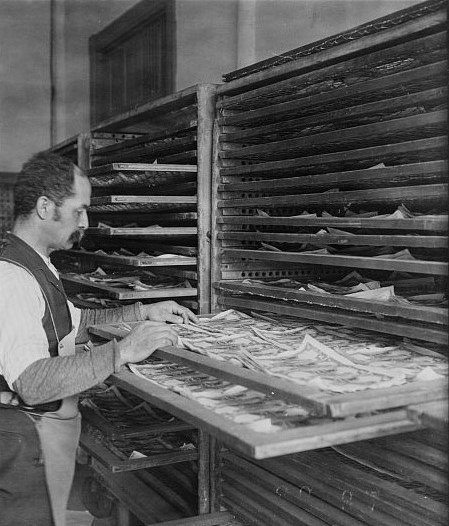Drying Banknotes in 1908
Here we are, drying banknotes in 1908. This was part of the wet-method of printing that continued into the 1950s.
The notes pictured are $2 Silver Certificates, Series 1899. The faces are shown, which means that these are finished notes (except for the surface printing of seals and serial numbers) as the the faces were printed last.
In 1908, the US Treasury was using 100% linen paper, and we can see all the wrinkling that occurs as the paper had been moistened before each printing. After printing, the notes needed to be left to dry to allow the ink to set.
The fact that these are four-subject note sheets also says that the notes were printed by hand on a flatbed press.
It is hard to imagine just how labor intensive banknote production was in the past and the degree of skill that was needed in every step of the process as everything was done by hand.
As any pressman can tell you today, every press, every load of paper, every batch of ink, and every plate all have their own personalities that need to be compensated for to get consistent quality.

